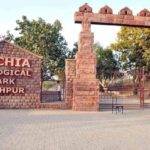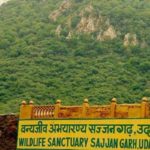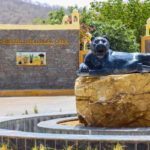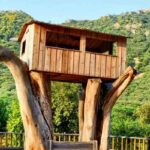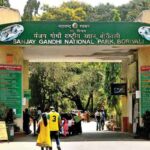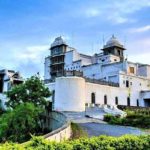Sajjangarh Biological Park, located in the vibrant city of Udaipur, Rajasthan, is a fascinating destination for wildlife enthusiasts and nature lovers. Nestled on the foothills of the Sajjangarh Palace, also known as the Monsoon Palace, the park spans approximately 36 hectares. It is encircled by the lush Aravalli Range, offering not just a sanctuary for various species but also breathtaking panoramic views of the surrounding landscapes.
Established and opened to the public in 2015, Sajjangarh Biological Park is part of a conservation effort aimed at providing a habitat for flora and fauna under threat. The park is home to a diverse array of animals, including tigers, lions, leopards, and a variety of deer species like sambar and chital. It also houses lesser-seen creatures such as the sloth bear and the Indian porcupine, enhancing its appeal as a comprehensive repository of Rajasthani wildlife.
Visitors to the park can enjoy guided safari tours, which are not only educational but also an opportunity to observe these magnificent creatures in environments designed to mimic their natural habitats. The park also focuses on educational programs for visitors, aiming to raise awareness about the importance of wildlife conservation. Accessible yet serene, the Sajjangarh Biological Park is a must-visit for those coming to Udaipur, offering a unique glimpse into the region’s natural heritage.
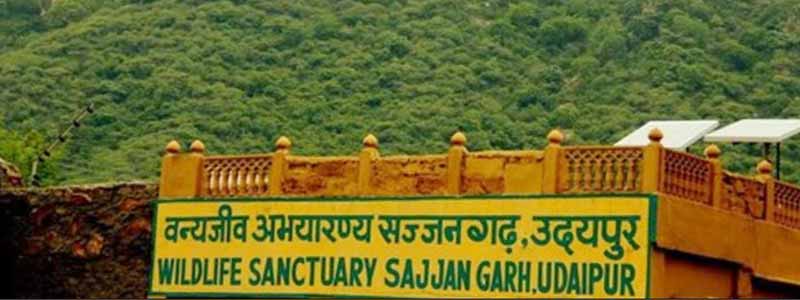
History of Sajjangarh Biological Park
Sajjangarh Biological Park, nestled in the foothills of the Sajjangarh Palace in Udaipur, Rajasthan, India, is a notable wildlife sanctuary that spans approximately 36 hectares. Officially inaugurated in 2015, this biological park is part of the larger Sajjangarh Wildlife Sanctuary, which encompasses about 5.19 square kilometers.
The park is named after the nearby Sajjangarh Palace, also known as the Monsoon Palace, which was constructed by Maharana Sajjan Singh of the Mewar Dynasty in the late 19th century. The biological park was developed with the dual purpose of providing a habitat for wildlife and a recreational area for educational tourism. It was designed under the guidelines of the Central Zoo Authority (CZA) of India, ensuring a high standard of animal care and management, Udaipur Tour Packages.
The terrain of Sajjangarh Biological Park is rugged, enhancing its natural beauty and providing a suitable environment for various animal species. It hosts a diverse range of wildlife, including the Bengal tiger, leopard, and different species of deer and reptiles, along with several aviary species.
The park plays a significant role in conservation efforts, focusing on the rescue and rehabilitation of local wildlife. Educational programs are also a cornerstone of the park’s objectives, aiming to promote awareness about wildlife conservation and the importance of biodiversity.
Sajjangarh Biological Park not only serves as a haven for nature lovers and wildlife enthusiasts but also contributes significantly to the ecological and cultural landscape of Udaipur, reflecting a blend of nature conservation practices and the historical legacy of the region.
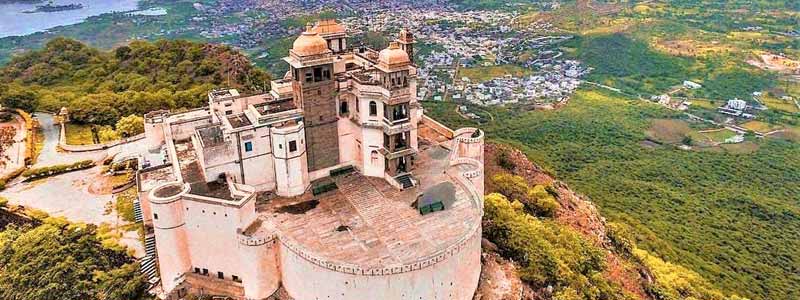
Places to visit near Sajjangarh Biological Park
Sajjangarh Biological Park is a popular tourist attraction located near Udaipur, Rajasthan, India. This zoological garden is situated close to the Monsoon Palace, also known as Sajjangarh Palace, offering spectacular views of the surrounding landscape including lakes, mountains, and forests. If you’re planning to visit Sajjangarh Biological Park, here are several other attractions nearby that you might consider adding to your itinerary:
Sajjangarh Palace (Monsoon Palace): Located on a hill just above the Biological Park, the Monsoon Palace offers panoramic views of Udaipur’s lakes, palaces, and surrounding countryside. It was originally built to watch the monsoon clouds; hence, it is popularly known as Monsoon Palace.
Fateh Sagar Lake: This is one of the most beautiful lakes in Udaipur and a popular spot for a leisurely drive or a relaxing evening. You can enjoy boat rides on the lake and visit the small island parks that dot the lake.
Lake Pichola: Another iconic lake of Udaipur, surrounded by majestic palaces, temples, bathing ghats, and elevated hills. Boat rides, especially at sunset, offer stunning views of the City Palace stretching along the east bank, while the south bank has lush gardens running down to the waterside.
City Palace: A majestic architectural marvel towering over Lake Pichola, the City Palace is a complex of courtyards, pavilions, terraces, corridors, rooms, and hanging gardens. It is a blend of Rajasthani, Mughal, Medieval, European, and Chinese Architecture.
Jagdish Temple: A large and artistically important temple located in the heart of the city. Dedicated to Lord Vishnu (also known as Jagdish), the temple boasts intricate carvings, stunning architecture, and a bustling atmosphere reflective of its spiritual significance.
Saheliyon Ki Bari: A beautiful garden adorned with fountains, kiosks, marble elephants, and a delightful lotus pool. It was built for the maidens accompanying the Princess of Udaipur as part of her dowry.
Shilpgram: A rural arts and crafts complex situated about 7 km from Udaipur, it’s a living ethnographic museum depicting the enormous diversities in craft, art, and culture between various Indian states.
Gulab Bagh and Zoo: A rose garden spread over 100 acres featuring a variety of roses and other attractions, including a toy train and library.
Bagore Ki Haveli: Located at Gangori Ghat near Lake Pichola, it has been restored to offer a look at the royal life with evening performances of Rajasthani folk dances and music.
Bhartiya Lok Kala Museum: It displays a rich collection of folk dresses, ornaments, puppets, masks, dolls, folk musical instruments, folk deities, and paintings.
Combining a visit to Sajjangarh Biological Park with these attractions will give you a comprehensive taste of Udaipur’s rich culture, history, and natural beauty.
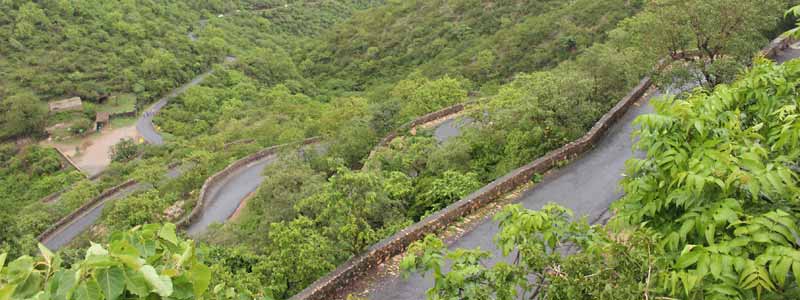
Best time to visit Sajjangarh Biological Park
The best time to visit Sajjangarh Biological Park in Udaipur would be during the cooler months of the year, which typically span from October to March. During this time, the weather is more pleasant, with mild temperatures that are suitable for exploring the park comfortably. Additionally, this period coincides with the winter season when wildlife activity is generally higher, making it an ideal time for animal spotting and enjoying outdoor activities. It’s advisable to avoid visiting during the scorching summer months (April to June) when temperatures can soar, making outdoor excursions less enjoyable.
How to Reach Sajjangarh Biological Park
To reach Sajjangarh Biological Park in Udaipur, you have several options depending on your mode of transportation:
By Car: If you’re driving, you can input “Sajjangarh Biological Park” into your GPS or map app to get directions. The park is located around 11 kilometers from the main city of Udaipur, so it’s relatively easy to access by road. The route might vary depending on your starting point, but typically you’ll take the Udaipur-Ahmedabad Highway and then follow signs to the park.
By Taxi or Auto-Rickshaw: You can hire a taxi or an auto-rickshaw from Udaipur city center to take you to Sajjangarh Biological Park. Most drivers will know the way, but it’s always a good idea to confirm beforehand.
By Public Transport: If you prefer public transport, you can take a bus from the Udaipur City Bus Depot. There might be buses that directly go to the park or at least pass nearby. You can inquire at the depot for the best route.
Tourist Services: Many tour operators in Udaipur offer packages that include visits to Sajjangarh Biological Park. If you’re staying in a hotel or guesthouse, they might also be able to arrange transportation for you.
Once you reach the vicinity of the park, you might have to walk a bit to reach the entrance as the parking area might not be right at the gate. It’s always a good idea to check for any updated information regarding directions or transportation options before you plan your visit Sajjangarh Biological Park.


